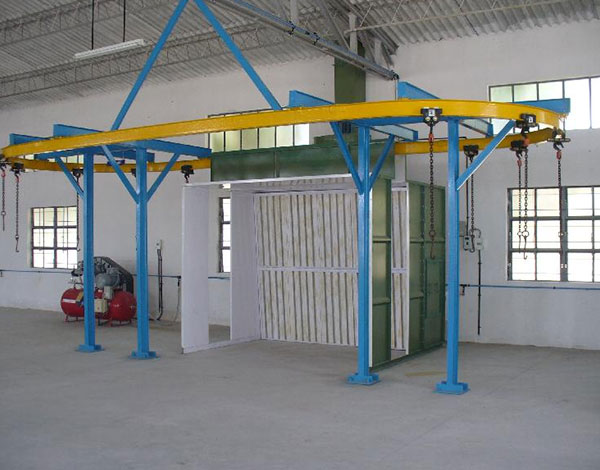The first step in the powder coating process is to prepare the pieces for spraying with powder coating.
Coating of a product requires cleaning and preparation of the intended surface(s) so that pollutants such as grease, dust, oil and rust can be removed before the coating process begins. With the help of a sequence of spraying chambers, pretreatment with chemicals is often achieved. Parts are cleaned with an alkaline, acidic, or neutral cleanser before assembly to ensure they are free of impurities. Most of the time, the surface of the item is coated with an iron- or zinc-phosphate conversion coating, or a transitional metal conversion coating, such as a zirconium oxide product. There are often rinse stages between stages to ensure that any remaining chemical is flushed from the system. A wide range of part sizes and designs can be pretreated using spray systems, whereas dip tanks can be used in some circumstances in place of spray systems.
When selecting a pretreatment method, the characteristics of the coating and substrate materials, as well as the planned application of the product being coated, must be taken into account. It is necessary to use pretreatments such as iron phosphate on steel substrates, zinc phosphate on galvanized or steel substrates, or non-chrome treatments on aluminum before applying powder coating. In Powder Coating Equipment, iron phosphate is the most frequent pretreatment, followed by zinc phosphate. Traditional phosphate techniques that utilise transition metals and organometallic compounds, as well as other options, have been supplemented by this novel technology. Sludge buildup in the pretreatment bath is less of an issue with alternative conversion coatings, which can be applied with minimal or no heat. Reduced operating expenses are achieved by reducing energy consumption, reducing floor area requirements, and reducing waste disposal needs. Non-chrome seal systems, on the other hand, have enhanced corrosion protection for steel, galvanized steel, and aluminum alloys as well as other materials.

A seal rinse over an alkali metal phosphate can minimize the number of phases required before Powder Coating Equipment application by as much as 50%. A variety of metal substrates can benefit from chrome dried-in-place treatments, and in some situations, they may be the sole preparation necessary for a certain application. Additionally, non-chrome technologies are becoming increasingly popular in a range of applications. There has been an increase in the use of non-chrome aluminum treatments in recent years due to their superior performance and lower cost.
To remove any remaining moisture, the components are dried in a low-temperature dry-off oven after they have finished the chemical pretreatment procedure. After that, they're ready for the final step, which is painting.
Structural and functional advantages can be gained from mechanical pretreatments such as sandblasting and shot blasting. High-velocity air is used to force sand, grit, or steel shot toward the substrate. As a result, the part develops an anchor pattern that aids in the powder coating spraying production line's attachment to its substrate. Inorganic pollutants including rust, mill scale, and laser oxide can all be removed utilizing mechanical cleaning methods.
Mechanical blasting can be used alone or in conjunction with a chemical treatment to remove pollutants to produce the best possible results. However, despite the fact that the blasting procedure provides a perfect surface for bonding, it does not offer any additional corrosion resistance or protection against corrosion. In order to protect surfaces that have merely been blasted from corrosion, a suitable primer is normally placed prior to blasting. Zinc-containing materials can be used as primers to further enhance the efficacy of a primer.


